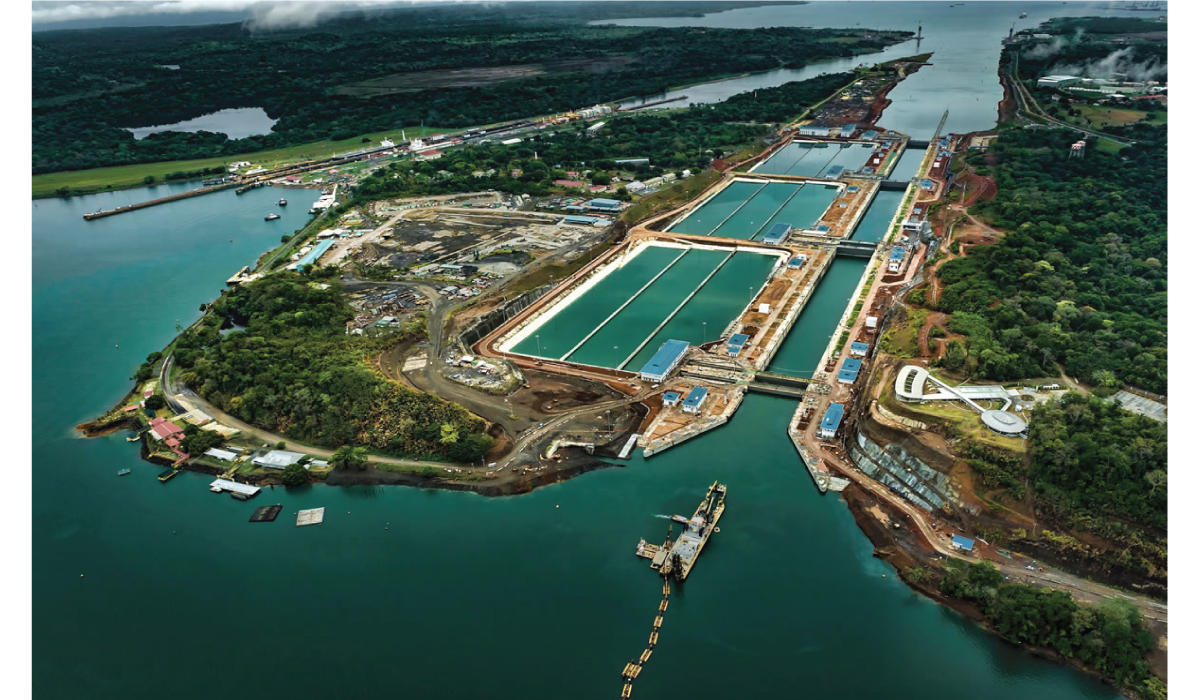The Panama Canal is an intersoceanic navigation way between the Caribbean sea and the Pacific ocean that crosses the Isthums of Panama in its narrowest point, whose length is 82 Km.

The canal has managed to reduce maritime communication in time and distance, dynamizing the trade and economic exchange by providing a short transit route and relatively cheap, between the two oceans, decisively influencing in the patterns of the worldwide commerce, boosting the economy of developed and developing countries, as well as providing the basic impulse for the economic expansion of many remote regions of the world.

The expansion project, after an intensive construction program (2009-2016), Cocoli and Agua Clara locks add to the operation of the Panama Canal, a third lane for the trasit of NeoPanamax ships.

The expanded Canal favors the development of worldwide maritime commerce multiplying opportunities of connectivity and exchange between countries and markets. The container ships segment represents more than half of the transits through the expanded Canal, followed by tank gas carriers such as Liquefied Natural Gas (LNG) and Liquefied Petroleum Gas (LPG). They have also transit vessel tanks, bulk carriers, cruise ships and RO-RO vessels. Competitively, the accessibility offered by the Panama Canal joint all markets, mainly Asia, Europe, North and South America.
The main commercial routes with traffic in the Panama Canal are:
- East Coast of USA and Asia (Far East)
- East Coast of USA and West Coast of South America.
- Europe and West Coast of South America.
- East Coast of USA and West Coast of Central America
- Coast to Coast of USA
The increase in Post and NeoPanamax ships traffic as a result of Panama Canal expansion brings the need to equip the country with a better capacity of services based on docks and container yards, both due to the increase of the number of vessels as the cargo volume.

Panama has a network of last generation seaports which offer a variety of load services to container ships, Ro-Ro vessels, bulk, liquid and general cargo, as well as to passengers in cruise terminals.
It has the best port infrastructure at Latin America, position 29 globally in maritime connectivity and number 7 in efficiency, with 5 world-class port: Manzanillo International Terminal, Colon Container Terminal and Cristobal at the Panamanian Caribbean Coast, plus Balboa and PSA Panama International Terminal at the Pacific.

Nowday we are the leaders in transhipments of America, thanks to the high efficiency of our terminals that operate at both ends of the Panama Canal and with land connection assisted by the railway and articulated vehicles which do the movement of the containers in transit.
Is important to mention that it is currently under construction and with an advance of 35%, which promises to be the most modern container terminal in the country, aimed at strengthening the Panamanian logistics-port platform. Panama Colon Container Port Inc. (PCCP), a subsidiary of the Shanghai Gorgeous Group and Landbridge Group companies, will occupy 37 hectares and will be designed to receive Panamax, NeoPanamax, Super Post-Panamax and Multipurpose Ships. This is located in the Isla Margarita sector, Colon province, passing the port of Colon Container Terminal.

To complement our offer, we count with 2 additional ports that offer commercial services to cargo in containers: Bocas Fruit Terminal in Almirante and Rambala in Chiriqui Grande, both located at the northwestern part of Panama in the Bocas del Toro province. These ports handle general and bulk cargo, but the container segment is dedicated to the refrigerated coating service for banana exports.






